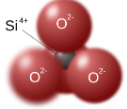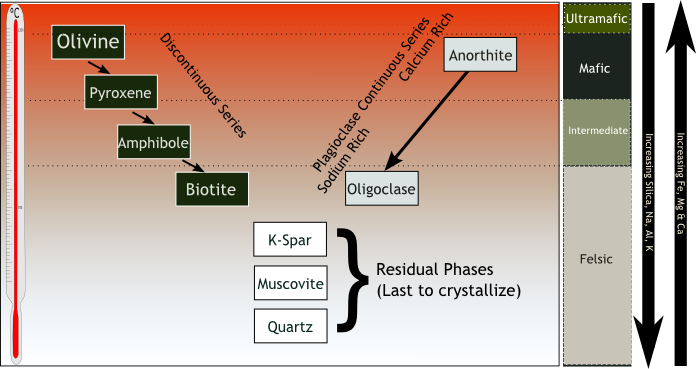Overview of Earth Science and Rock Cycle Processes
1/66
There's no tags or description
Looks like no tags are added yet.
Name | Mastery | Learn | Test | Matching | Spaced |
|---|
No study sessions yet.
67 Terms
Earth Science
All of the sciences that deal with earth and its place in the solar system is earth science
Some of the sciences that fall into Earth Science are
Geology, Astronomy, Meteorology, Oceanography
Atmosphere
Layer of gases surrounding Earth, supports weather.
Hydrosphere
All water on Earth, including oceans and glaciers.
Biosphere
Regions of Earth supporting life and ecosystems.
Geosphere
Earth's solid surface and internal layers.
Uniformitarianism
Geological principle: present processes explain past events.
Hypothesis
Tentative explanation based on limited evidence.
Theory
Well-supported explanation based on extensive evidence.
Minerals
Naturally occurring, solid, inorganic substances with structure.
Crystalline Structure
Ordered arrangement of atoms in minerals.
Ions
Atoms with an electrical charge due to electrons.
Element
Pure substance consisting of one type of atom.
Compound
Substance formed from chemically combined elements.
Silicon Oxygen Tetrahedron
Basic building block of silicate minerals.

Igneous Rocks
Formed from cooled and solidified molten rock.
Bowen's Reaction Series
Sequence of mineral crystallization from cooling magma.

Crystallization Temperatures
Temperatures at which minerals crystallize from magma.
Mechanical Weathering
Breaks rocks into smaller pieces without composition change.
Chemical Weathering
Alters mineral composition, forming new minerals.
Frost wedging
Freeze-thaw process causing rock fragmentation.
Exfoliation dome
Rock layers peel off due to temperature changes.
Chemical weathering
Decomposition of minerals through chemical reactions.
Desert chemical weathering
Heat present, moisture often lacking.
Carbonic, sulfuric, and organic acids contribute.
Sources of acid
Clay minerals
Most abundant product from silicate mineral weathering.
Oxidation
Chemical weathering process involving oxygen.
Abrasion
Mechanical weathering through friction and impact.
Unloading
Mechanical weathering from pressure release.
Carbonic acid
Chemical weathering agent in groundwater.
Sedimentary rocks
Stratification/Layering is a key characteristic of
Geological significance of sedimentary rocks
Reveal Earth's history and past environments.
Detrital sedimentary rocks
Formed from weathered solid particles accumulation.
Detrital minerals
Quartz, feldspar, and mica are prevalent.
Grain size
Primary basis for classifying detrital rocks.
Detrital rock formation process
Weathering, erosion, transportation, deposition, compaction, cementation.
Compaction in lithification
Effective for fine-grained sediments like clay.
Chemical sedimentary rocks
Form from minerals precipitating from water.
Biochemical sedimentary rocks
Formed from organic material accumulation.
Evaporite deposits
Minerals left after water evaporation.
Examples of sediment-collecting areas
Riverbeds, deltas, beaches, lake bottoms.
Rock salt
Example of evaporite rock formed from evaporation.
Conglomerate
Detrital rock composed of rounded clasts.
Particle size
Indicates energy and environment of rock formation.
Fine particles
Suggest low-energy environments like lakes.
Coarse particles
Indicate high-energy environments like rivers.
Particle shape
Reflects distance and environment of transportation.
Rounded particles
Suggest long transport from source.
Angular particles
Indicate short transport near source.
Mudcracks
Indicate drying and wetting periods in sediments.
Ripple marks
Formed by water movement in shallow environments, sedimentary structure
Fossil
Preserved remains or traces of ancient life.
Conditions for fossil preservation
Rapid burial, hard parts, low oxygen, low-energy.
Oyster
Highest fossilization chance due to hard shell.
Cow
Durable bones and teeth enhance fossilization.
Moth
Soft body; fossilizes under specific conditions.
Jellyfish
Very low fossilization chance without rapid burial.
Sedimentary rocks
Most fossils found in this rock group.
Weathering
Alteration due to new environmental conditions.
Metamorphism
Change in rock due to temperature and pressure.
Differential pressure
Creates foliated metamorphic texture through mineral alignment.
Confining pressure
Produces nonfoliated texture by even pressure application.
Contact metamorphism
Localized changes from nearby magma heating.
Regional metamorphism
Large-scale changes from high pressure and temperature.
Slate, schist, gneiss from low to high intensity
Metamorphic rock order.
Rock cycle
Process where one rock type transforms into another.
Igneous rock
Can break down into sediments for sedimentary rock.